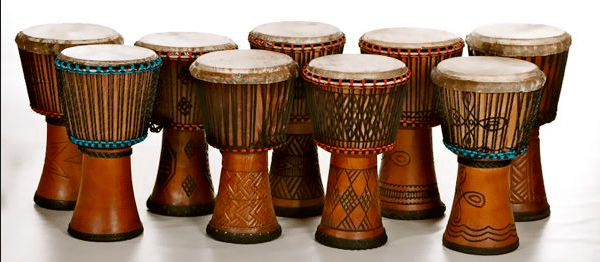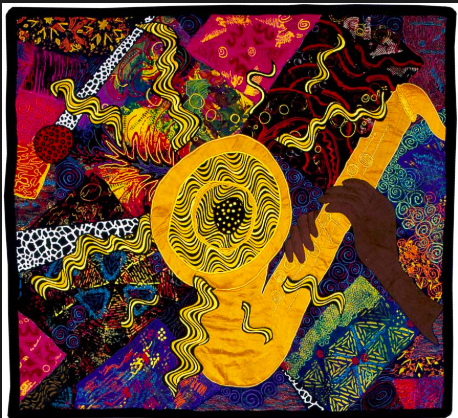Where Did Folk Music Come From?
Contrary to popular belief, folk music actually came from Africa. The music started in various African countries in various tribes, and when it was bought to America it was continuously used to bring Black people together and give them a sense of identity.
Elements of Folk Music
There are many elements of African American folk music including the banjo, call and response, the patting juba, instrumentation, celebration, religious concepts, etc. However, for the purpose of this post I have chosen to focus on the elements of rhythm and drum, more particularly syncopation and the djembe.
Musicality: The Beginning of Complex Rhythms

- Djembe or “Anke dje, anke be:” to call people together; everyone gather together
- The djembe is said to have come from West Africa and was played for several generations typically for ritual purposes.
- The drum is designed in a specific manner to create a resonating sound, with the skin of the drum typically made from goat skin.
- The ropes on the side of the drum are said to be for tuning, intertwining and/or tightening the ropes increases the pitch.
- Nowadays people still play the djembe and various other conga instruments
- The drum is the heart and soul of rhythm, the pumping force in any musical composition
- The djembe’s influence on folk music is immensely important and has left lasting effects on drum and rhythm as we know it
Musicality Diversified: Syncopation
- Syncopation simplified is just accents on different; unexpected beats.
- Instead of just your classical one… two…. three… you play between those beats; eighths, sixteenths etc. ~ subdivision of the beat
- African music has been known to be both “polymetric and polyrhythmic;” having several competing rhythms and meters
- African drumming can be series’ of “extended cross rhythms” with the downbeat emphasized and yet put on a back burner to accentuate the weaker beats
- In contrast with European, “monorhythmic” music that was introduced with slavery, Africans would put together colorful and spirited music that would be a representation of their homeland’s culture
- Repetition and improvisation also played a role in bringing together the diverse rhythms created by our ancestors. Repeating the drum beat as the underlining pulse of the song and yet improvising phrases all over the beat is a core aspect of drum circles as well
- See a short explanation of syncopation and improv on bongos: https://youtu.be/jHJx2XB65l8

Summary: Social Implications; Why Is This Important?
“Every musical element – rhythm, harmony, melody, timbre, and the basic forms of jazz – is essentially African in background and derivation.” ~ Gunther, Schuller (1968) Early Jazz: Its Roots and Musical Development
Simply put: Almost everything came from African countries.
Learning the basics of African folk music is essential in establishing context for every musical genre in America. With slaves as the backbone of America, recognizing their culture, music, celebrations, etc. is necessary to knowing oneself as an African American. The music that was established is what White Americans used to form their own music away from the former European culture. Syncopation and diversity in rhythm can be seen today in neo-soul, trap beats, house music, dubstep, etc. Until we acknowledge the past, we can’t fully understand the current.


